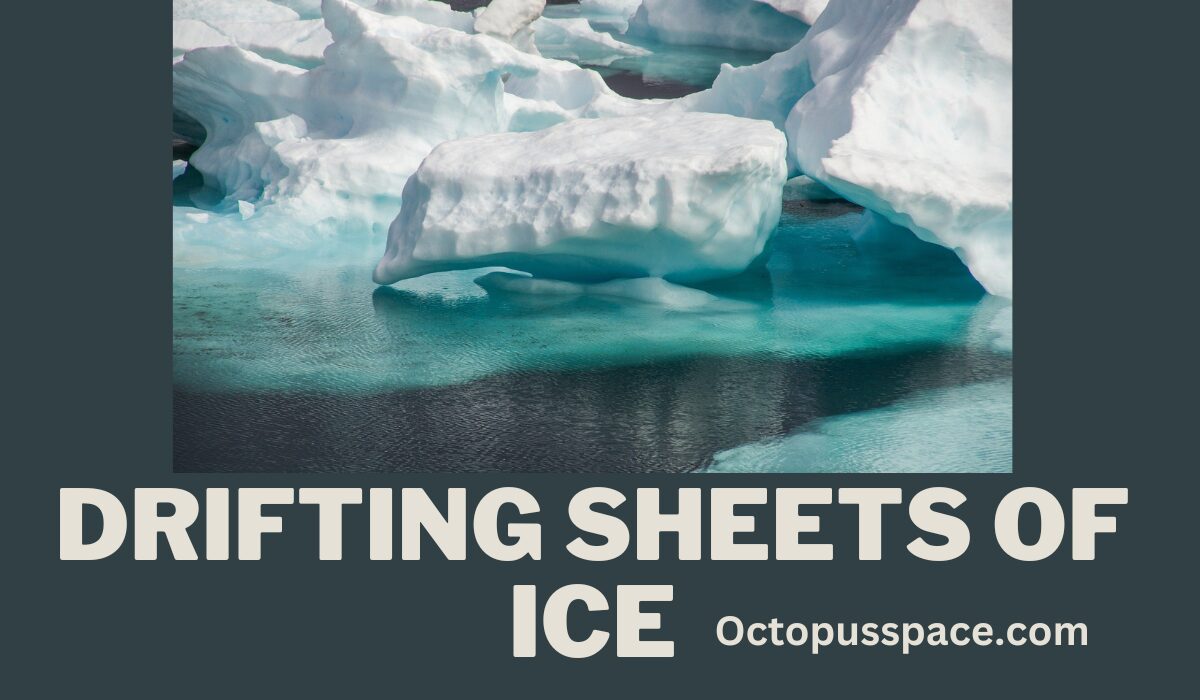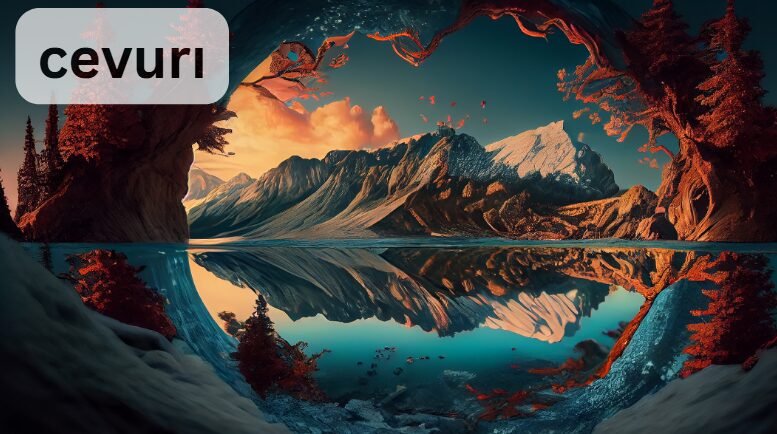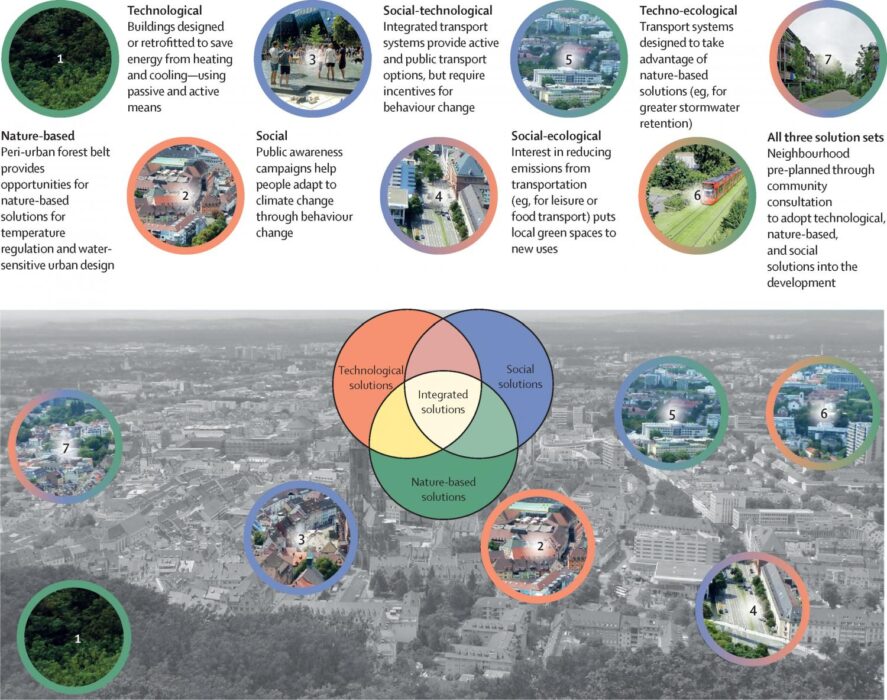The Arctic is a realm of stark beauty and profound mystery, where icy expanses dominate the landscape and silence is only broken by the subtle creaks of drifting ice. Among the most captivating features of this frozen wilderness are the drifting sheets of ice, massive floating platforms that are constantly in flux. These sheets of ice, or ice floes, play a crucial role in the Arctic ecosystem, influencing global climate patterns, supporting diverse marine life, and shaping the very geography of the polar region. In this article, we delve into the intriguing world of drifting ice floes, exploring their formation, movement, ecological significance, and the challenges they face in a rapidly changing climate.
Formation of Ice Floes
Ice floes are born from the sea ice that forms when the temperature of seawater drops below freezing. In the Arctic, this process begins when the surface of the ocean cools and saltwater freezes, creating a thin layer of ice. As the ice thickens, it can break into larger plates, or floes, due to the action of wind and currents. The initial formation of ice floes is influenced by several factors, including temperature, salinity, and ocean currents.
During the Arctic winter, the process accelerates as the temperatures plummet and the polar night extends, allowing ice to grow thicker. By spring, as temperatures begin to rise, the ice may start to crack and fragment, forming floes that can drift away from their original location. These drifting floes vary in size from small patches to massive sheets spanning hundreds of kilometers.
Movement and Dynamics
Once formed, ice floes are subject to the forces of wind and ocean currents, which drive their movement across the Arctic Ocean. The movement of these floes is not random; rather, it follows complex patterns influenced by the interaction between atmospheric and oceanic conditions.
1. Wind and Currents
Wind plays a significant role in the movement of ice floes. In the Arctic, prevailing winds can push ice floes in various directions, creating distinct drift patterns. Additionally, ocean currents contribute to the movement of ice, often transporting floes over great distances. The combination of wind and current can lead to the formation of ice ridges and leads—gaps in the ice where the floes have been pushed apart.
2. Seasonal Variations
The movement of ice floes is also affected by seasonal changes. During the winter months, the ice cover is generally more extensive and more stable. However, as spring progresses and temperatures rise, the ice becomes more dynamic. The melting and refreezing of ice can create a patchwork of different ice types, each with its own movement patterns. This seasonal variability influences the distribution of ice floes and their interaction with the surrounding environment.
3. Ice Drift Studies
Understanding the movement of ice floes is crucial for scientists studying Arctic dynamics. Researchers use a combination of satellite imagery, aerial surveys, and buoys equipped with GPS to track ice drift and gather data on the movement and deformation of ice floes. This data helps scientists model and predict changes in the Arctic ice cover, which is essential for understanding the broader implications for global climate patterns.
Ecological Significance
Drifting ice floes are more than just frozen water; they are vital components of the Arctic ecosystem. They provide habitat and sustenance for a variety of species, influencing both marine and terrestrial life.
1. Habitat for Wildlife
Ice floes serve as crucial habitats for a range of Arctic wildlife. For example, polar bears rely on sea ice as a platform for hunting seals, their primary prey. The ice floes provide the necessary access to open water where seals breathe and give birth. Without stable ice floes, polar bears face increased difficulty in finding food, which can have cascading effects on their populations.
In addition to polar bears, other species such as seals, walruses, and seabirds also depend on ice floes. Seals use the ice as a place to rest and give birth, while walruses haul out on the ice to avoid predators and to access feeding grounds. Seabirds, including species like the Arctic tern and the common eider, use ice floes as nesting sites and as platforms from which to fish.
2. Algae and Phytoplankton
Beneath the ice floes, a thriving community of algae and phytoplankton plays a critical role in the Arctic food web. These microscopic organisms use the sunlight that filters through the ice to perform photosynthesis, forming the base of the marine food chain. When the ice begins to melt in the spring, the release of these organisms supports the growth of zooplankton, which in turn feeds larger marine animals.
3. Climate Regulation
Ice floes also contribute to the regulation of the Arctic climate. The reflectivity, or albedo, of sea ice influences the amount of solar energy absorbed by the ocean. Ice has a high albedo, meaning it reflects most of the sunlight back into space. As ice floes melt and expose more of the darker ocean surface, more solar energy is absorbed, which can further accelerate ice melt and contribute to global warming. This feedback loop highlights the interconnectedness of the Arctic ice system and global climate patterns.
Challenges and Threats
The Arctic ice floes face numerous challenges, many of which are driven by human-induced climate change. The impacts of these threats are profound, not only for the ice floes themselves but for the broader Arctic ecosystem and global climate.
1. Climate Change
One of the most significant threats to drifting ice floes is climate change. Rising global temperatures have led to a decrease in sea ice extent and thickness. The Arctic has experienced unprecedented levels of ice melt in recent decades, with summer sea ice cover shrinking significantly. This reduction in ice cover affects the stability and distribution of ice floes, altering their movement patterns and reducing their overall extent.
2. Ocean Acidification
The increase in atmospheric carbon dioxide (CO2) is also leading to ocean acidification, which can impact the health of marine organisms dependent on ice floes. Acidification affects the ability of organisms such as phytoplankton and shellfish to build and maintain their calcium carbonate structures. This disruption can have cascading effects on the Arctic food web, further impacting species that rely on ice floes for survival.
3. Human Activities
Human activities, such as shipping, oil and gas exploration, and mining, pose additional threats to the Arctic ice floes. Increased shipping traffic can lead to ice damage and pollution, while resource extraction activities can disturb the delicate balance of the Arctic ecosystem. The expansion of these activities in the Arctic raises concerns about the potential for increased environmental degradation and impacts on ice floes and their associated habitats.
4. Loss of Traditional Knowledge
Indigenous communities in the Arctic have long relied on their knowledge of ice floes and their movement for survival. The rapid changes in ice conditions are affecting traditional practices and ways of life. The loss of traditional knowledge due to the changing environment can have significant cultural and practical implications for Arctic communities.
Adaptation and Future Prospects
Addressing the challenges facing drifting ice floes requires a multifaceted approach that includes both scientific research and policy measures.
1. Monitoring and Research
Ongoing monitoring and research are essential for understanding the dynamics of ice floes and their role in the Arctic system. Advances in satellite technology and remote sensing provide valuable data on ice conditions and movements, allowing scientists to track changes and develop predictive models. Collaborative research efforts between international organizations and Arctic communities are crucial for gaining a comprehensive understanding of ice floe dynamics.
2. Climate Action
Addressing the root causes of climate change is critical for mitigating its impacts on Arctic ice floes. Reducing greenhouse gas emissions and transitioning to sustainable energy sources are key strategies for slowing the pace of global warming and limiting the extent of ice melt. International agreements, such as the Paris Agreement, play a vital role in coordinating global efforts to combat climate change.
3. Protection of Arctic Ecosystems
Protecting Arctic ecosystems and their associated habitats requires targeted conservation efforts. Designating protected areas, regulating human activities, and promoting sustainable practices can help safeguard the integrity of ice floes and their ecological functions. Engaging Indigenous communities in conservation efforts and respecting their traditional knowledge can enhance the effectiveness of these initiatives.
4. Adaptation Strategies
Adapting to the changing Arctic environment involves developing strategies to support communities and species affected by ice loss. This includes supporting Indigenous communities in adapting to new conditions, providing resources for wildlife conservation, and investing in infrastructure to manage the impacts of ice change.
You May Also Like:
Table of Contents
ToggleA Comprehensive Guide to Understanding B88221141
Conclusion (drifting sheets of ice)
Drifting sheets of ice, or ice floes, are more than just frozen fragments of the Arctic Ocean; they are vital components of a complex and interconnected system. Their formation, movement, and ecological significance are integral to understanding the Arctic environment and its global implications. As the Arctic undergoes rapid changes due to climate change and human activities, it is essential to continue monitoring and researching these drifting ice floes, to protect the fragile ecosystems they support, and to take concerted action to address the broader challenges facing our planet. By unveiling the secrets of drifting ice floes, we gain valuable insights into the health of the Arctic and the future of our global climate.





